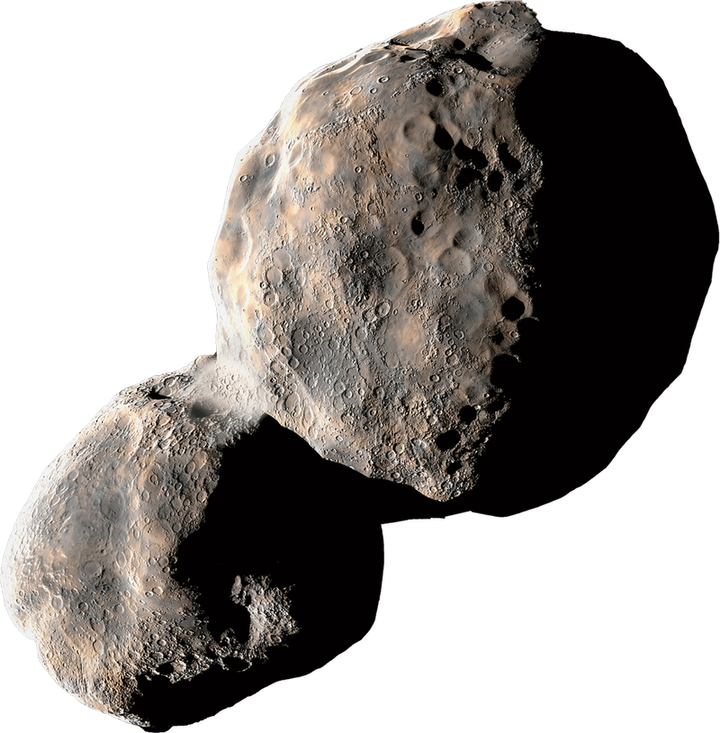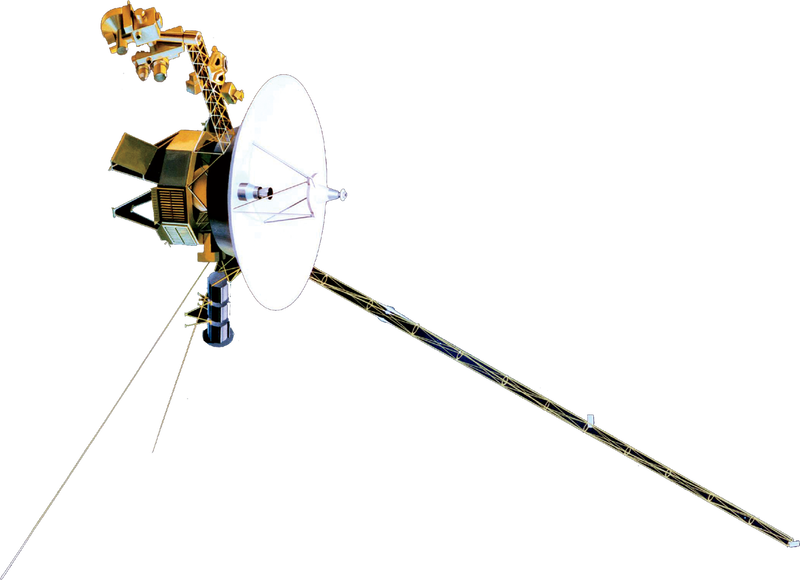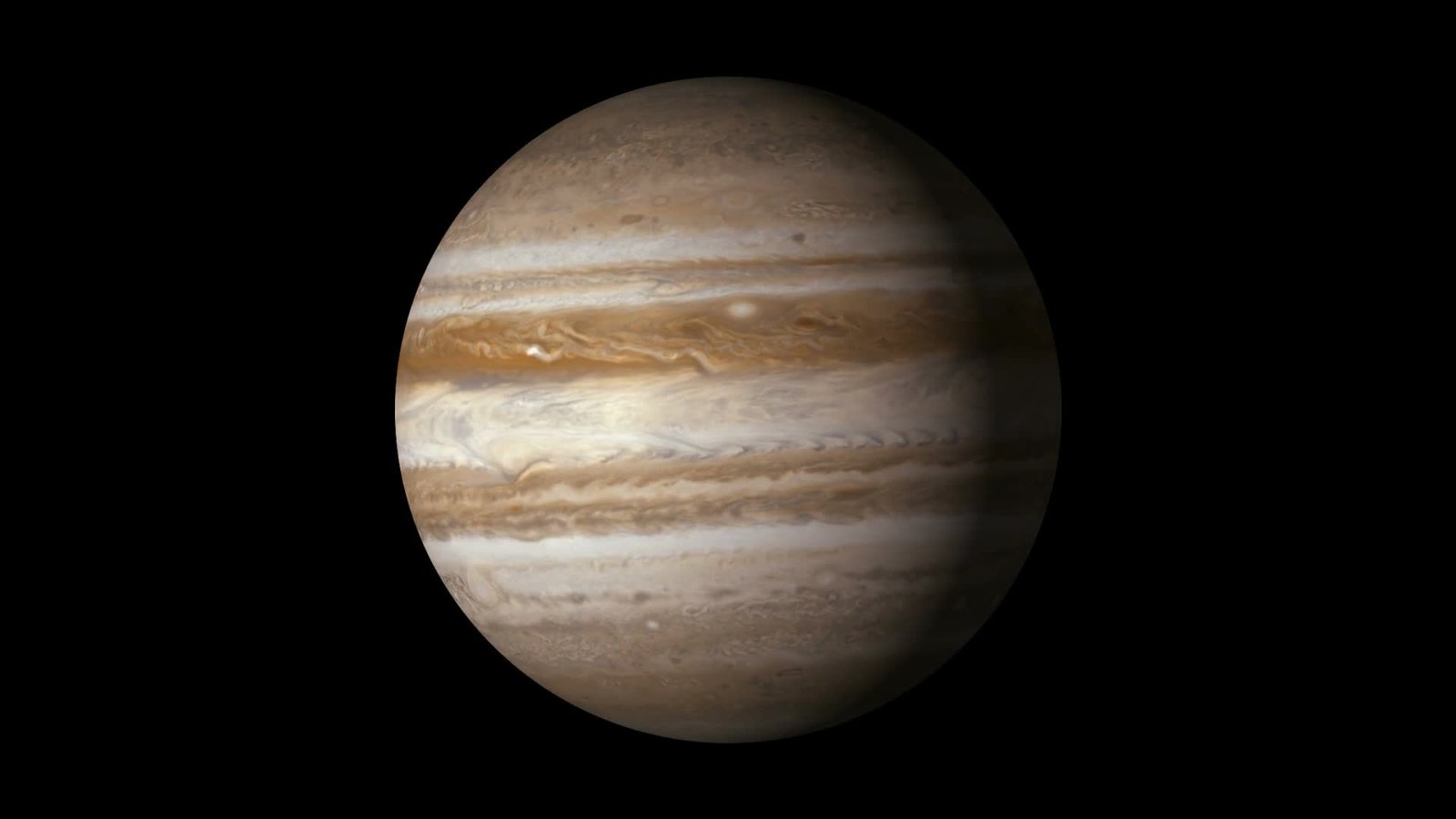PicturingthePoles
BeyondtheasteroidbeltliesJupiter.Jupiteristhelargestplanetinthesolarsystem— 11timesthediameterofEarth.Since2016,aNASAspacecraftnamedJunohasbeenorbiting Jupiter.
Jupiterspinsfasterthananyotherplanetinthesolarsystem—onceevery9hoursand55minutes,comparedtoonceadayonEarth.Thisrapidspincreatesbeltsofgasthatrunfromwesttoeastacrosstheplanet.JunotookpicturesofJupiter’snorthandsouthpolesforthefirsttime.Theseareverydifferentfromtherestoftheplanet.Therearenogasbeltsthere.Instead,theplanet’spoleshavevast,swirling storms.

Thisartist’srenderingshowshowJunolooksasitorbits Jupiter.
FartherandFurther
There’splentyofspacetoexplorebeyondJupiter.In2006,NASAlaunchedaspacecraftnamedNewHorizons.ThespacecraftusedJupiter’sgravitytoslingshotitselftowardPluto.Plutoistheninthlargestobjectthatgoesaroundthe sun.
Nineyearsafteritslaunch,NewHorizonsflewpastPluto,showinguspicturesofmountainsthreemileshigh.Thesemountainsaren’tmadeofrock.They’remadeofwater-ice.Plutoissocoldthatthissubstanceisashardasrockandcanformtallmountains.Thiswasanimportantdiscovery.Scientistswanttoknowmoreabouthowthesemountains formed.
NewHorizonsisstillgoing.Itflewpastthefarthestobjectevervisited:Arrokoth.MuchsmallerthanPluto,Arrokothismadeoftwoobjectsstucktogether.Itlookslikeasnowmaninspace!Fromtiptotip,itisabout35kilometers(22miles) long.
Scientiststhinkitstwopartswereonceseparate.Theywentaroundeachother,thewaythemoongoesaroundEarth.Then,littlebylittle,theygotcloserandclosertoeachotherandeventuallyjoined together.
Thisartist’sdrawing,basedonimagestakenbythespacecraftNewHorizons,showsthemostdistantobjectevervisitedbyhuman spacecraft.


Voyagernowexploresinterstellarspace,asshowninthisartist’s drawing.
Arrokothisfar,faraway.Believeitornot,somespacecrafthavetraveledevenfarther.Forexample,Voyager1andVoyager2,whichNASAlaunchedin1977.Voyager1’smissionwastoflybyJupiterandSaturn.Voyager2flewbyJupiter,Saturn,Uranus,and Neptune.
BothspacecraftkeptgoingandarenowreallyfarawaybutarestillsendingdatabacktoEarth.Voyager1isnearly22billionkilometers(14billionmiles)fromthesun.That’snearly150timesfartherthanEarthistothesun.Voyager2isn’tfar behind.
Bothspacecraftarenowexploringinterstellarspace.That’stheregionbetweenstars.Thisisthefirsttimeaspacecrafthasgoneintoittoseewhatit’s like.
Whydoweexplorethesolarsystem?Becauseweareapartofit.Wewanttoknowmoreabouttheplacewherewelive.Eachmissionteachesusmoreandshowsusfascinatingnewplacesin space.
